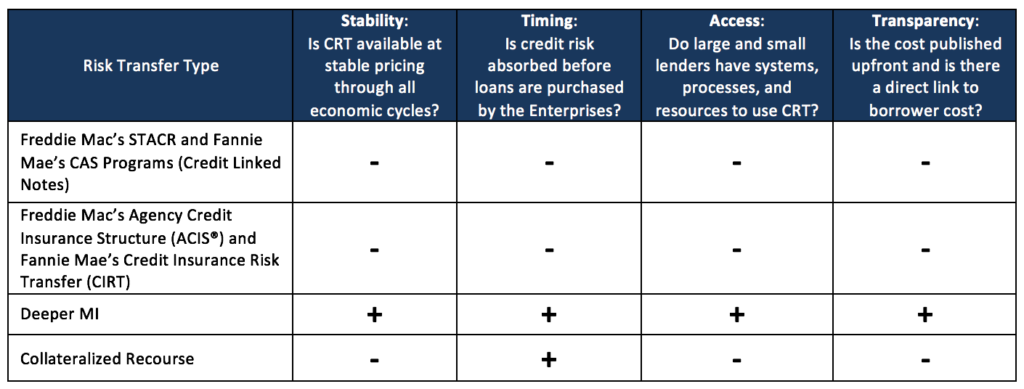Here is a roundup of recent news in the housing finance industry, including USMI’s release of its 2017 policy priorities and housing finance reform principles, industry outreach to the Federal Housing Finance Agency (FHFA) on GSE activities, and the recent news of increases in Federal Housing Administration (FHA) mortgage delinquencies:
- USMI released housing finance reform principles that address ways the housing finance system can be put on a more sustainable path. These principles allow creditworthy borrowers to have access to affordable mortgage credit without exposing taxpayers and the government to housing related credit risks. These principles include:
- Protecting taxpayers by allowing private capital to absorb all credit losses in front of any government guaranty
- Promoting stability in a reformed housing finance system
- Ensuring accessibility to mortgage finance for creditworthy borrowers and participation by lenders of all sizes and types
- Fostering transparency through a consistent and coordinated approach to the federal governments’ housing policy among all agencies and entities
- USMI released its public policy priorities for 2017, which are dedicated to fostering sustainable homeownership while significantly limiting credit risk to taxpayers and the government. These policy priorities include:
- Enabling access to homeownership and affordable mortgage credit with MI
- Setting and using GSE fees
- Extending and preserving tax deductibility of MI
- Reducing taxpayer risk with MI
- Establishing coordinated housing policy
- Establishing complementary roles for the Federal Housing Administration and MI
- Strengthening the role of MI in comprehensive reform legislation
- Expanding the use of “Deeper Cover” MI in GSE-risk sharing
- Enabling access to homeownership and affordable mortgage credit with MI
- In a joint letter, USMI and eight other financial trade groups wrote to FHFA Director Mel Watt and urged the agency to engage with industry stakeholders before moving forward with evaluating new or alternative credit score models used by Fannie Mae and Freddie Mac for conventional mortgage loans. The joint letter reads:“As the Federal Housing Finance Agency (‘FHFA’) moves forward with evaluating new/alternative models, we request that FHFA engage more openly and broadly with industry through a public forum, provide relevant data and information from the Enterprises to help inform industry participants about the potential impact of new credit score models, and share your assessment of fair lending risks posed by contemplated changes. … Given the significant implications that the various options could have on borrowers and our industries, our associations urge FHFA to broaden the input from key industry participants to help reach the most suitable option to expand credit while promoting sustainable homeownership.”
- The National Association of Realtors (NAR) sent a letter to FHFA Director Mel Watt regarding the recent news that Fannie Mae will obtain a billion dollars’ worth of loans to finance its purchase of single family homes that will be rented out in markets with limited supply. The letter states:“Rather than focusing on allowing well-qualified Americans to build wealth through affordable mortgages options, Fannie Mae is actively financing large institutions to compete with them. These investors do not expand the affordable housing stock. Rather, in this limited market they drive up the price of rents and remove affordable inventory from the hands of American homeowners. … At a time of a historically low homeownership rate, our nation needs the GSEs to bolster homeownership opportunities for millions of responsible, middle class American families, not funding special interest deals with Wall Street financial firms that take away those opportunities.”Several House Democrats also wrote a letter to Director Watt expressing their concerns over the deal, which they say chases profits at the expense of Fannie Mae’s primary mission of boosting U.S. homeownership.
- The House Financial Services Committee issued a statement regarding the spike in delinquencies on mortgages backed by the FHA at the end of 2016. Mortgage delinquencies at the FHA jumped in the 4th quarter of 2016 for the first time since 2006, with the delinquency rate increasing to 9.02 percent. In the statement, Chairman Jeb Hensarling stated that the data “makes it clear that President Trump was absolutely right to undo the previous administration’s irresponsible action.”












